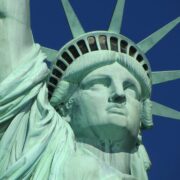Eiffel Tower: A Guide to Paris’ Iconic Landmark
The Eiffel Tower, a symbol of romance, art, and architectural brilliance, stands tall in the heart of Paris, France. This iconic structure, which has become synonymous with the city itself, has a rich history and significance that many are unaware of. In this comprehensive guide, we delve deep into the story of the Eiffel Tower, its construction, its significance, and the experience of visiting this magnificent monument.
The Eiffel Tower is a timeless icon of French artistry, inventiveness, and romance. This iron masterpiece, designed by the visionary engineer Gustave Eiffel for the 1889 Exposition Universelle, was initially regarded with skepticism by critics. Nonetheless, it has now become one of the world’s most recognisable and visited landmarks.
The Eiffel Tower, at 324 meters (1,063 ft), was the world’s tallest man-made building until the early twentieth century. Its elaborate lattice arrangement, made up of over 18,000 individual iron elements, is not only a visual wonder but also an engineering marvel, demonstrating the capabilities of 19th-century construction techniques.
Aside from its architectural magnificence, the tower has a unique role in cultural history. It has appeared in innumerable films, paintings, and literary works, representing Parisian elegance and the City of Light’s ageless attraction. Furthermore, its nocturnal illuminations turn it into a golden beacon, with spectacular shows that enchant both locals and tourists.
The Eiffel Tower is now more than a monument; it represents French pride, resilience, and the enduring human spirit. It provides a unique viewpoint of Paris and serves as a tribute to the city’s rich history and global significance, whether viewed from a Seine River boat, a Montmartre hilltop, or its own viewing decks.
The Genesis of the Eiffel Tower
The Eiffel Tower, or “La Tour Eiffel” as it’s known in French, wasn’t always the beloved symbol of Paris. In fact, its inception was met with skepticism and criticism. Designed by the French engineer Gustave Eiffel for the 1889 Exposition Universelle (World’s Fair) held in Paris, the tower was intended to celebrate the 100th anniversary of the French Revolution. The idea was to create a temporary structure that would stand for 20 years and then be dismantled. However, its utility and grandeur ensured its permanence.
Architectural Marvel
Standing at a staggering height of 324 meters (1,063 feet), the Eiffel Tower was the tallest man-made structure in the world until the completion of the Chrysler Building in New York in 1930. Comprising over 18,000 individual iron parts, held together by 2.5 million rivets, the tower is a marvel of 19th-century engineering. Its intricate iron lattice design not only provides aesthetic appeal but also structural integrity, making it resistant to wind forces.
Cultural Significance
Over the years, the Eiffel Tower has transcended its role as a mere architectural wonder. It has been featured in countless films, literature, and artworks, symbolising love, freedom, and human achievement. During World War II, it stood as a beacon of hope for the Parisians. Today, it’s not just a tourist attraction but a representation of French pride and resilience.
Visiting the Eiffel Tower
Levels and Views: The tower has three accessible levels. The vista becomes more spectacular as you ascend. On a clear day, one can see up to 65 kilometers (40 miles) from the top.
Dining with a View: The tower houses dining options, including the Michelin-starred “Le Jules Verne” restaurant, offering a gastronomic experience with a panoramic view of the city.
Illuminations: Every evening, the Eiffel Tower is adorned with golden lights, and there’s a sparkling light show every hour, making it a mesmerizing sight.
Cultural Events: The tower often hosts exhibitions and cultural events, enhancing the visitor’s experience.
Preservation and Sustainability
In recent years, efforts have been made to preserve the Eiffel Tower and make it more sustainable. The tower now harnesses wind energy and collects rainwater for its toilets. Solar panels have been installed, and energy-efficient LED lights adorn the tower during its evening illuminations.
The Eiffel Tower is unrivalled in the tapestry of worldwide landmarks, not only for its architectural magnificence but also for the feelings it inspires. It is a tribute to human aspiration, a symbol of a city’s unwavering spirit, and a beacon that has illuminated the ambitions of countless lives for over a century. As the sun sets over the Seine and the lights of the Eiffel Tower begin their nightly dance, one is reminded of the eternal nature of beauty and the universal language of art. The Eiffel Tower is more than just iron and rivets; it is a link across eras, civilizations, and hearts. It serves as a reminder that, even in an ever-changing world, some things never lose their potential to awe and amaze. Let us carry forth the teachings of resilience, ingenuity, and solidarity that this famous monument epitomises as we look to the future. Because its silhouette against the Parisian skyline is a symbol of hope, love, and the enduring force of human ingenuity.
Conclusion
The Eiffel Tower is not just an architectural masterpiece but a testament to human ingenuity and perseverance. It reminds us of the limitless possibilities when vision, art, and science come together. Whether you’re admiring it from afar, standing beneath its colossal frame, or viewing the world from its platforms, the Eiffel Tower offers an experience like no other. As Gustave Eiffel once said, “The Tower is, and will remain, a witness to the prowess of French engineering.”













